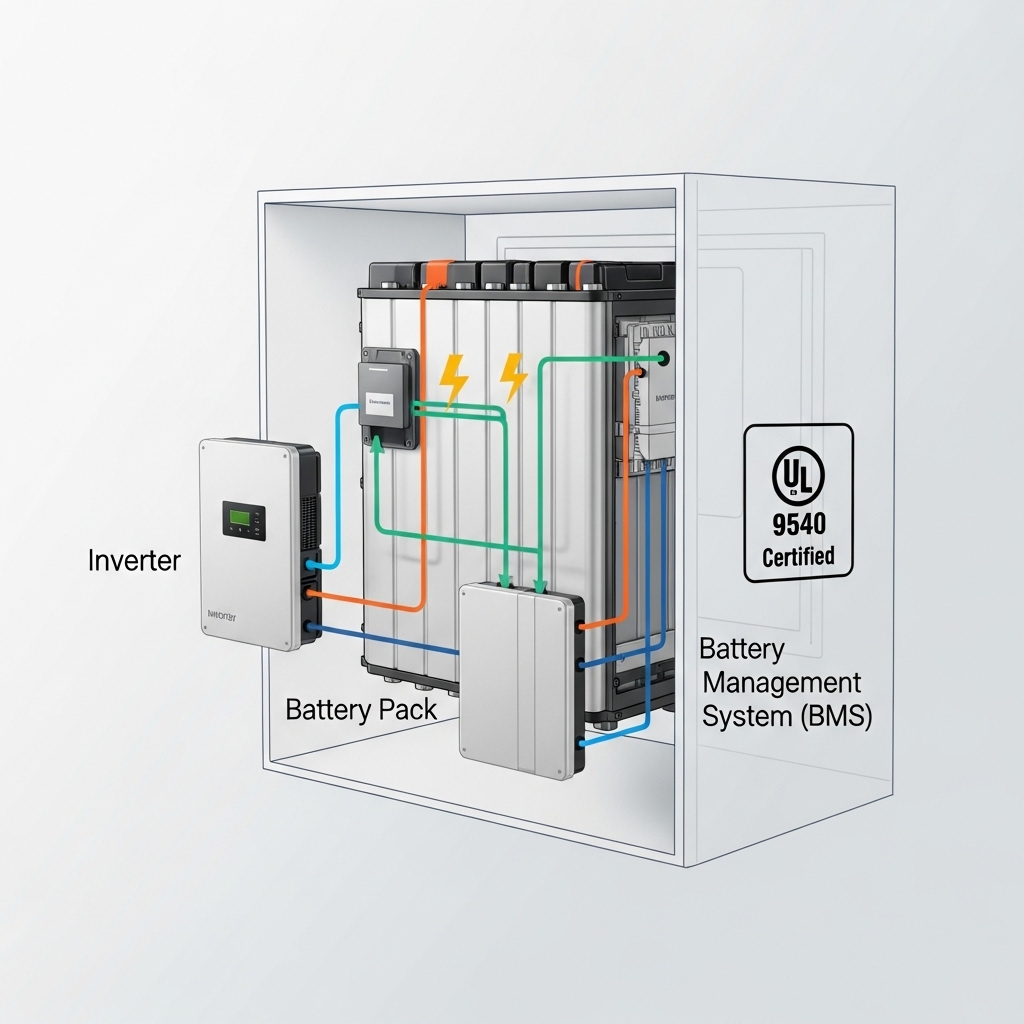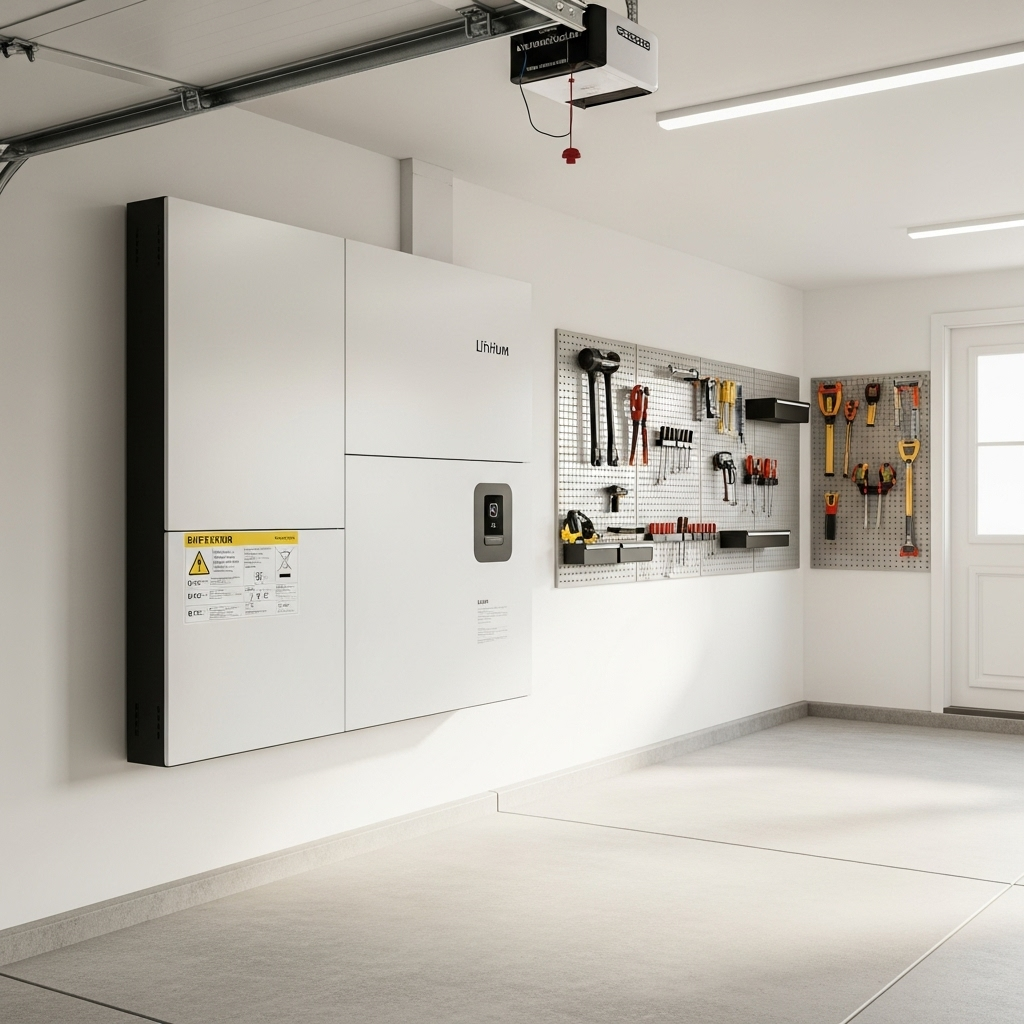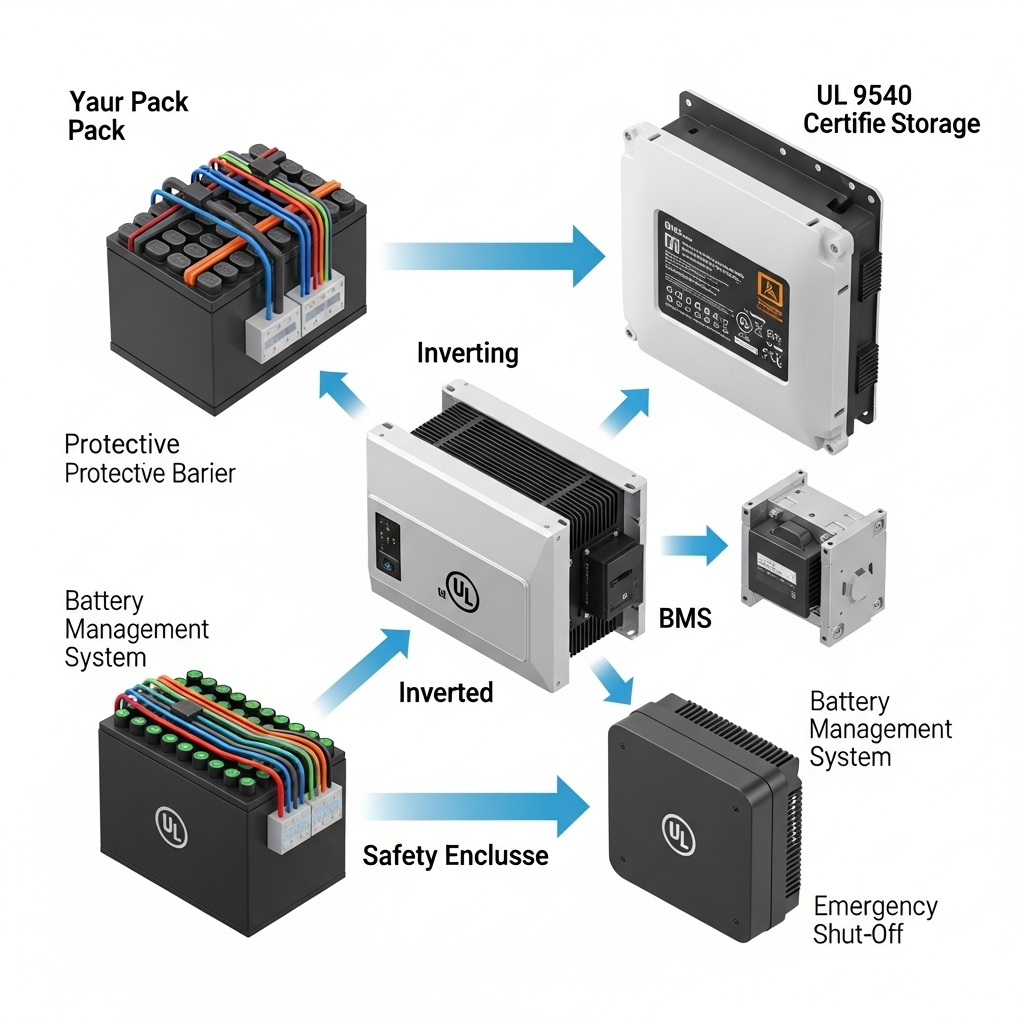Adding an energy storage system (ESS) to your home is a major step toward energy independence. As you evaluate your options, safety is paramount. You may encounter terms like UL 9540 and UL 9540A, which are critical benchmarks for fire safety. These two standards sound similar, but they serve very different functions. Understanding this distinction is key to choosing a system that not only provides power but also protects your home and family.
Understanding the Foundation of Safety
Safety standards are not just bureaucratic hurdles; they are a framework for trust and reliability. For complex products like home batteries, independent verification is crucial.
Why Certification Matters for Your Home Battery
Third-party certification from a Nationally Recognized Testing Laboratory (NRTL) like Underwriters Laboratories (UL) confirms that a product has been rigorously tested against established safety standards. For a homeowner, this certification provides peace of mind. It shows the manufacturer has invested in building a product that meets stringent safety requirements. This can also be a non-negotiable requirement for obtaining permits, securing homeowners insurance, and qualifying for certain incentives.
The Key Players in Safety Compliance
Three main groups work together to ensure your ESS is safe. UL develops the safety standards and tests products against them. The National Fire Protection Association (NFPA) creates installation codes, such as NFPA 855, which dictate how and where systems can be installed. Finally, your local Authority Having Jurisdiction (AHJ)—typically the city or county building inspector—enforces these codes and grants the final approval for your project.
UL 9540: The Standard for Complete System Safety
Think of UL 9540 as a comprehensive seal of approval for the entire energy storage system. It is a product safety standard, not just a test for one component.
What Does UL 9540 Certification Cover?
A UL 9540 certification applies to the complete, factory-integrated ESS. This includes the batteries, the inverter, the thermal management system, and the all-important Battery Management System (BMS). The standard evaluates how these components work together under various conditions, testing for:
- Electrical Safety: Protection against shock, overcharging, and short circuits.
- Mechanical Safety: The durability of the enclosure and its ability to withstand impact and contain internal failures.
- Environmental Performance: How the system operates in different temperatures and humidity levels.
- Functional Safety: Verifying that the control systems and software perform as designed to maintain safe operation.
A UL 9540 certified system is a pre-packaged solution where every part has been proven to work safely with the others.
For Homeowners: Why You Should Demand UL 9540
When you choose a UL 9540 certified ESS, you gain significant advantages. The permitting process with your local AHJ is often much smoother because the system's safety has already been validated as a whole. This avoids the complication of proving that separate, unlisted components are safe to use together. It is the difference between buying a car that has passed all federal crash safety tests versus building one from parts and hoping for the best.
UL 9540A: The Test Method for Fire Risk Assessment
While UL 9540 certifies a system's overall safety, UL 9540A answers a different, more specific question: what happens if a battery cell fails and catches fire?
The Purpose of the UL 9540A Test
UL 9540A is a test method, not a certification. A system does not 'pass' or 'fail' it. Instead, the test generates critical data about fire propagation. It intentionally forces a battery cell into thermal runaway to measure how the fire behaves. The key metrics include:
- The potential for fire to spread from one cell to another, and from one battery unit to another.
- The rate of heat released during the event.
- The type and volume of flammable gases produced.
How This Data Informs Safe Installation
This data is invaluable for fire officials and installers. It allows them to apply the rules in the NFPA 855 installation code correctly. For example, if UL 9540A test data shows that a fire in one ESS unit will not spread to an adjacent unit, the NFPA 855 code may permit those units to be installed closer together. This can be crucial for installations in space-constrained areas like garages. The test data provides the scientific basis for safe and practical installation guidelines.
UL 9540 vs. UL 9540A: A Direct Comparison
The easiest way to see the difference is to compare them side-by-side.
| Feature | UL 9540 | UL 9540A |
|---|---|---|
| Purpose | Product Safety Standard | Test Method for Fire Propagation |
| Outcome | Certification (Listing) | Data Report |
| Key Question | 'Is the integrated system safe for use?' | 'If a fire starts, how does it behave?' |
| Primary User | Homeowners, Manufacturers, AHJs | AHJs, Installers, Fire Departments |
Practical Application for Your Home
Armed with this knowledge, you can make a more informed decision when selecting an ESS.
What to Look for on a Product Spec Sheet
When reviewing product documentation, look for the phrase 'UL 9540 Certified' or the UL listing mark. This is your primary indicator of comprehensive system safety. You may also see a manufacturer mention that their product has undergone UL 9540A testing, which demonstrates a commitment to transparency and safety. While important, the UL 9540A data complements the full UL 9540 certification. As noted in the ultimate reference on solar storage performance, a safe system must also be an effective one, so evaluating metrics like round-trip efficiency and depth of discharge remains just as important.
The Role of Professional Installation
Even the safest, most certified system can become a hazard if installed improperly. Professional installers are trained to follow NFPA 855 and local electrical codes. They use the data from UL 9540A tests to determine correct placement, ventilation, and any necessary fire mitigation measures. The importance of proper system design and installation is a recurring theme in renewable energy. As the Renewable Power Generation Costs in 2024 report from IRENA highlights, 'soft costs' like installation and system design are critical components for the overall success and safety of a project.
Moving Forward with Confidence
Choosing a home energy storage system is a significant investment in your property and your energy future. By prioritizing a UL 9540 certified system, you are choosing a product that has been holistically evaluated for safety. The UL 9540A test method provides the essential data that enables professionals to install that system correctly, protecting your home. As policies like the Inflation Reduction Act accelerate the adoption of battery storage, as detailed in the IEA's World Energy Investment 2023 report, the role of robust safety standards becomes even more critical. The shift toward distributed energy resources, driven by changes in the broader power grid discussed in reports like the EIA's AEO2014 - Issues in Focus articles, places more responsibility on individual system safety. By understanding the difference between these two UL standards, you can ask informed questions and confidently select an ESS that delivers both energy independence and peace of mind.
Frequently Asked Questions
Can a system have UL 9540A test data but not be UL 9540 certified?
Yes. A manufacturer can perform UL 9540A testing to gather fire propagation data without having the full system certified to UL 9540. This data is useful for code officials. However, for a homeowner, the UL 9540 certification is the more comprehensive mark of safety, as it covers the entire system's design and function.
Does UL 9540 certification guarantee my system will never have a fire?
No certification can offer an absolute guarantee against all failures. UL 9540 certification significantly reduces risk by ensuring the system is designed, built, and tested to prevent common causes of failure and to safely manage potential hazards like thermal runaway. Proper professional installation and periodic maintenance are also critical for long-term safety.
My installer mentioned NFPA 855. How does that relate to these UL standards?
NFPA 855 is the installation code for energy storage systems. It provides the rules for installers to follow, such as how much space is required between battery units or between the system and a window. The code often relies on data from UL 9540A testing to set these requirements. A UL 9540 certified system generally simplifies the process of complying with NFPA 855.
Is a system with LiFePO4 batteries automatically safer?
Lithium Iron Phosphate (LiFePO4) battery chemistry is known for its excellent thermal stability, making it inherently more resistant to thermal runaway than some other lithium-ion chemistries. While this is a major safety advantage, overall system safety depends on the complete design, including the Battery Management System (BMS), cooling, and enclosure. The UL 9540 certification validates the safety of the entire integrated system, providing the highest level of assurance.





Leave a comment
All comments are moderated before being published.
This site is protected by hCaptcha and the hCaptcha Privacy Policy and Terms of Service apply.